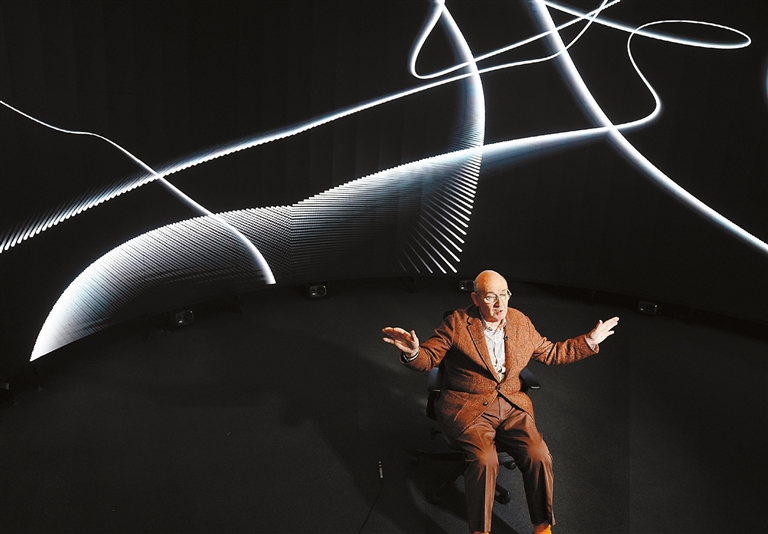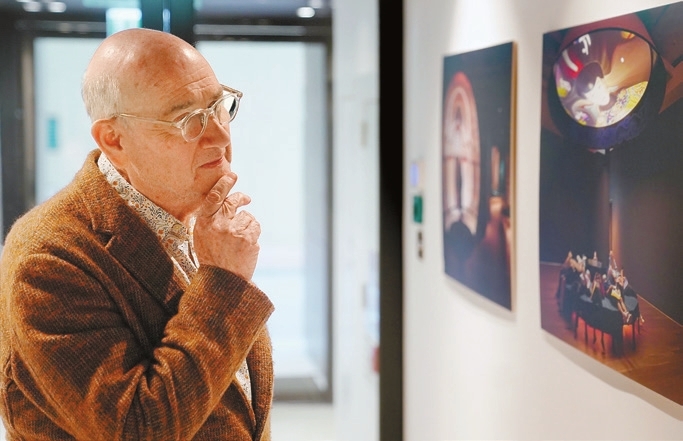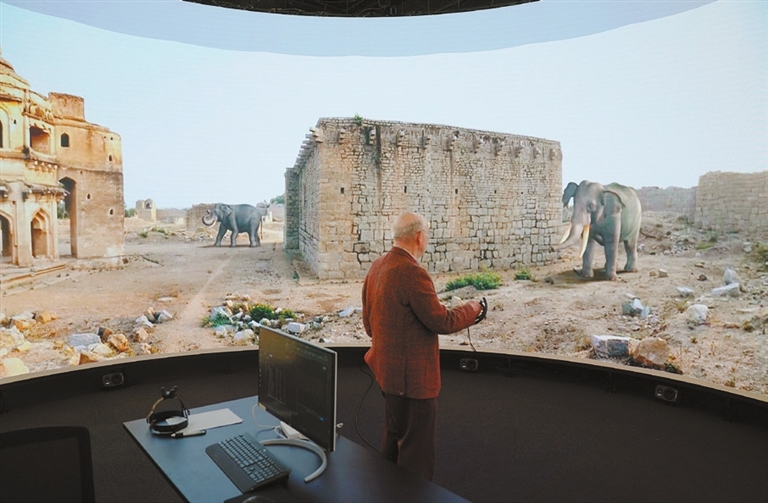


ON a sunny afternoon, Hong Kong resident Anna Wong hopped on a bike to start a special tour of the world-renowned Gardens of Versailles. By cycling, she passed through the carefully designed tree alley, meticulously manicured lawns and animal-shaped fountains. The experience was so authentic that she almost forgot she was not in France. This virtual journey is part of the “Virtual Versailles” exhibition at the Hong Kong Heritage Museum. The artist behind the interactive installation is Jeffrey Shaw, a prolific Australian artist whose works often offer interactive and immersive experiences. “I’ve always wanted the audience to be the co-creators of my artworks,” said Shaw, chair professor of the Academy of Visual Arts of Hong Kong Baptist University (HKBU). Since moving to Hong Kong in 2009, Shaw has been an active figure in the city’s new media art scene not only as an art creator, but also as curator and educator. His relationship with Hong Kong is also an interactive one: Constantly he draws inspiration from the city’s diverse and rich culture, and in return, he applies art to tell and let people feel for themselves — the city’s past, present and future. While each cyclist can see his or her own journey generated by the bikes, he or she can also see the journey of another cyclist with his or her peripheral vision in Shaw’s work. “It’s ground in real-world experience,” Shaw said. “When we visit any space, we don’t just look ahead. We are looking around all the time. Our real-world experience is a kind of collage of impressions,” he said. In fact, the real world has always been the source of inspiration for Shaw. “I would say one of the fundamental objectives of all my art practices is to somehow create a link between the imaginative spaces and one’s sense of real-world experience and bring these two things together,” Shaw said. Walking into the Visualization Research Center at HKBU, a giant 360-degree screen came into sight. The panoramic screen, consisting of over 400 LED panels with a resolution of 26 million pixels, embodies Shaw’s vision of future cinema. Using wearable sensors and biometric devices, this new cinematic platform can track the viewers’ physical position, gesture, facial expression, body temperature and heart rate to understand what they are looking at, and how they are behaving with respect to other viewers. Shaw said the new platform will likely break the linear narrative of traditional movies and create a new artistic experience of “human-computer interaction.” In the context of a dance performance, for example, the dances will adjust in response to the reaction of the audience, which is captured by the sensors. In that case, “the viewers are the choreographers,” Shaw said. Similar interactive experiences were almost ubiquitous in Shaw’s artworks. When the Hong Kong Palace Museum opened to the public last July, an interactive installation titled “Dreamscape of the Qianlong Emperor” attracted many. In the gallery, 12 people were lying down on a specially designed circular couch modeled on Qing Dynasty (1644-1911) furniture, gazing up at a 5-meter-wide circular video projection on the ceiling, and listening to the poem written by the emperor mourning his deceased wife. In Shaw’s view, art can connect the past, present and future. “Every artist works from a baseline of a deep respect for the past, because nothing can be made that isn’t in some way indebted to the past and isn’t fundamentally a continuation of the past no matter how contemporary or radical,” he said. As artificial intelligence (AI) now generates images in seconds, Shaw sees AI and other technologies rather an opportunity that further opens up artists’ imagination. Born in 1944, Shaw left Australia at the age of 19, traveling to countries including Italy, Britain and Germany to practice new media art. In 2009, at the invitation of the City University of Hong Kong, Shaw came to Hong Kong and has never thought of leaving. The city gives him fresh inspiration, as he gradually develops an appreciation and respect for Chinese culture. “When I first came to Hong Kong, Chinese calligraphy all looked the same to me. Now I can see that every calligraphic work is fundamentally different,” he said. The city’s love for art and culture also brought Shaw opportunities. In 2012, through the introduction by a local nonprofit “Friends of Dunhuang (Hong Kong),” Shaw partnered with the Dunhuang Academy to digitally present the beauty of the Mogao Caves in Dunhuang. With an iPad in hand, viewers can get “inside” the cave via augmented reality (AR). In 2021, commissioned by Hong Kong’s Tourism Commission, Shaw led a team to produce “City in Time,” a tourism project that uses AR to enable visitors at designated sites to compare the scenes of Hong Kong’s past with the present-day setting around them, using their smartphones as interfaces. He said he plans to work on a Hong Kong version of “Legible City,” replacing the city landscape again with Chinese characters. “I’ve enjoyed every minute that I’ve been here, getting to know the media art community here in Hong Kong, being part of the community, and being able to contribute to the community,” he said. (Xinhua) | 
